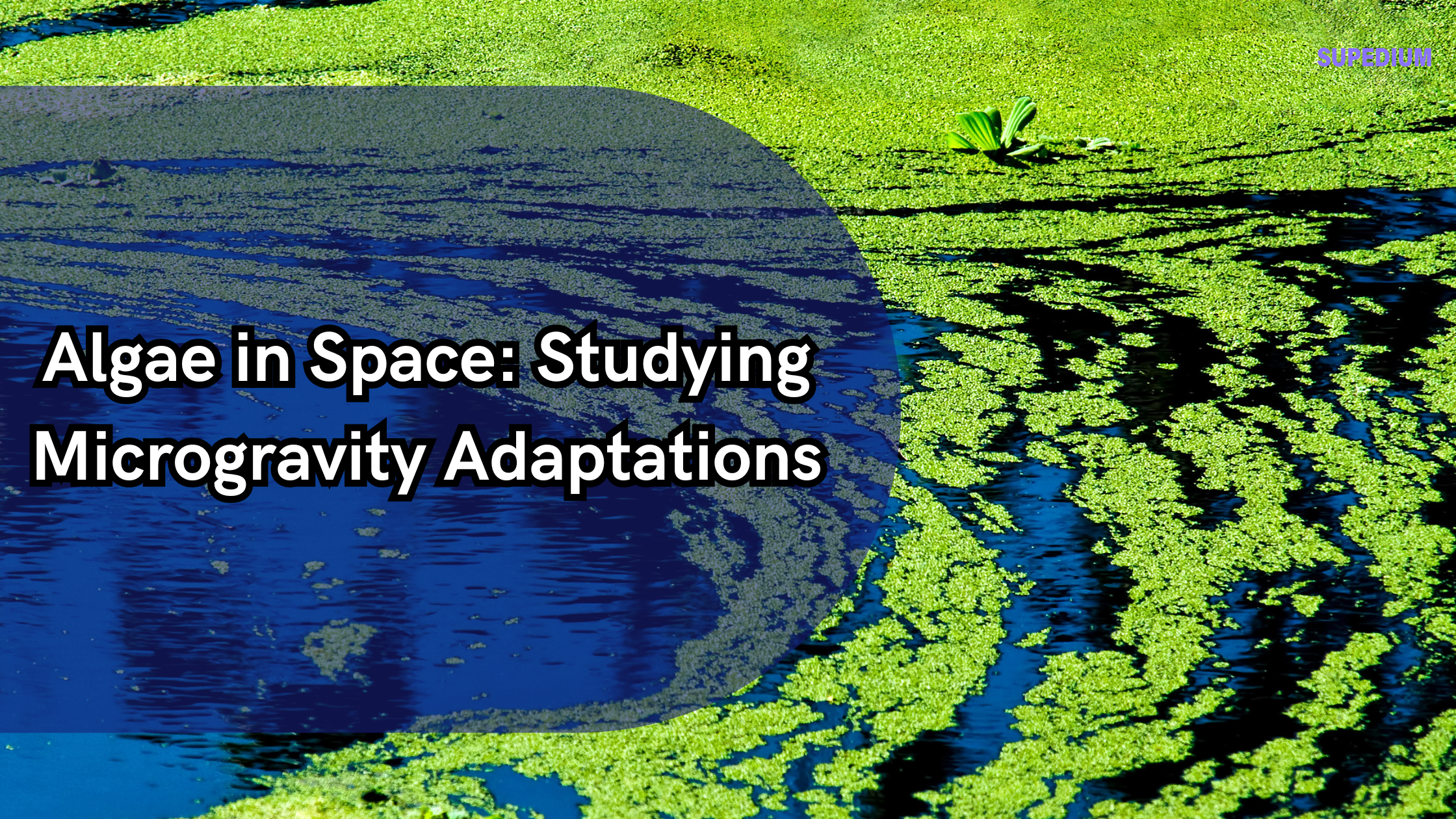Table of Contents
![]()
Introduction
The study of algae in space is a fascinating intersection of space exploration and biological research. Algae, simple yet versatile organisms, play crucial roles in ecosystems on Earth and hold promise for a range of biotechnological applications. As humanity pushes the boundaries of space exploration, understanding how these organisms adapt to microgravity offers valuable insights into both fundamental biology and practical applications for space missions.
Microgravity and Its Effects on Biological Systems
Microgravity, the condition experienced in space where gravitational forces are much weaker than on Earth, profoundly affects biological systems. Unlike Earth’s gravity, which influences everything from blood circulation to cellular processes, microgravity creates a unique environment where organisms must adapt to survive and function.
In microgravity, cellular processes such as growth and division are altered. Cells may exhibit changes in their morphology, size, and rate of division. Metabolic pathways can shift, leading to different rates of nutrient utilization and waste production. Gene expression also changes, as cells adapt to the lack of gravitational cues that normally influence their behavior on Earth.
Algae as a Model Organism
Algae are an excellent model organism for studying these adaptations due to their simple structure, rapid growth, and adaptability. They come in various types, including:
- Cyanobacteria: Often referred to as blue-green algae, these are among the oldest and most resilient organisms, capable of photosynthesis and nitrogen fixation.
- Green Algae (Chlorophyta): These algae are commonly found in freshwater environments and are key players in oxygen production and aquatic ecosystems.
- Brown Algae (Phaeophyceae): Predominantly marine, brown algae are known for their complex structures and roles in marine ecosystems.
- Red Algae (Rhodophyta): Characterized by their reddish pigments, red algae are important in marine environments and contribute to the formation of coral reefs.
The simplicity of algae makes them ideal for studying the effects of microgravity. They grow quickly and can be manipulated genetically, providing insights into how they adapt to space environments.
Previous Research on Algae in Space
Space agencies have long recognized the value of algae research in understanding microgravity effects. Historical experiments have provided significant insights:
- Early Experiments: Initial studies involved sending algae on suborbital flights or aboard early space missions to observe their growth and behavior in space.
- Space Shuttle Missions: During the Space Shuttle era, algae experiments were conducted to investigate their growth patterns, metabolic changes, and stress responses in microgravity.
- International Space Station (ISS): More recent research has focused on long-term experiments aboard the ISS, where algae have been grown in specialized chambers to study their adaptations over extended periods.
These studies have revealed that algae can indeed grow and reproduce in microgravity, although they exhibit altered growth patterns and physiological responses compared to their Earth-based counterparts.
Microgravity Adaptations of Algae
Algae exhibit several notable adaptations in microgravity:
- Growth and Development: In the absence of gravity, algae often display altered growth patterns. For instance, their morphology might change, leading to different shapes and sizes. Reproductive strategies can also shift, with some algae showing changes in the way they produce and release spores or gametes. Nutrient uptake and waste management also adapt, as algae develop mechanisms to cope with the altered fluid dynamics in space.
- Metabolic and Physiological Changes: Photosynthesis and respiration rates can vary in microgravity. Algae may adjust their photosynthetic efficiency or the way they process light and nutrients. Stress responses are also significant, with algae developing new strategies to deal with the unique challenges of space environments. Changes in pigmentation and biochemical composition can occur as algae adapt to the microgravity-induced stresses.
- Gene Expression and Genetic Modifications: Space research has shown that microgravity affects gene expression in algae. Certain genes related to growth, stress responses, and metabolism become more or less active in space. This has led to the identification of key genes involved in microgravity adaptation. Additionally, genetic engineering techniques are being explored to create algae strains with enhanced survival and performance in space.
Applications and Implications
The study of algae in space has several practical applications and implications:
- Space Exploration and Colonization: Algae can play a crucial role in life support systems for space missions. They can be used for oxygen production, carbon dioxide absorption, and even as part of bioreactors for growing food in space habitats. Their ability to thrive in microgravity makes them suitable candidates for these systems.
- Biotechnological Innovations: Insights gained from space research can lead to the development of space-tolerant algae strains with applications on Earth. These algae might be used in bioremediation, agriculture, or as part of sustainable energy solutions. Understanding extremophiles, like space-adapted algae, can also lead to new technologies and approaches in environmental management.
Future Directions and Research Opportunities
Future research on algae in space promises to expand our understanding of microgravity effects and biological adaptations. Emerging technologies, such as advanced space biology research tools and new experimental platforms, will facilitate more detailed studies. Collaborative international efforts will be essential for integrating algae research with other scientific disciplines.
Long-term goals include understanding how algae might evolve to adapt to space environments over extended periods. This knowledge will be crucial for preparing for deep space missions and potential extraterrestrial colonization, where sustainable life support systems will be essential.
Conclusion
The study of algae in space offers profound insights into how living organisms adapt to microgravity. These adaptations not only enhance our understanding of basic biological processes but also open up new possibilities for space exploration and biotechnology. As research continues, the knowledge gained will contribute to both the future of space missions and the advancement of various Earth-based applications.
Share This





Be the first to comment